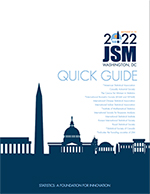Back
AAPOR2022
Survey Research Methods Section
Address-Based Sampling for Socio-Demographic Studies of the U.S. Jewish Community
Thursday, May 12, 2022
-
Zachary H. Seeskin
NORC at the University of Chicago
-
David Dutwin
NORC at the University of Chicago
-
Leonard Saxe
Brandeis University
Jewish community studies, which provide estimates of the size and characteristics of Jewish populations in different metropolitan areas, provide critical information to inform planning and programming. Because of the small proportion of the population who identify as Jewish and the lack of official statistics on religion, sampling procedures are complex. Until recently, random digit dialing was considered the gold standard. Only recently has address-based sampling (ABS) been applied to Jewish community studies. Two recent scale applications of ABS are the 2020 Metropolitan Chicago Jewish Population Study and the 2021 Study of Jewish Los Angeles. Both designs employed dual-frame sampling from combined, deduplicated Jewish organization membership lists and a version of the U.S. Postal Service Computerized Delivery Sequence File licensed from a vendor. We discuss strategies critical for the success of implementing ABS for Jewish community studies, including using predictive modeling and geographic stratification to reach Jewish households. The paper considers the advantages, as well as limitations, of using ABS for the study of rare populations.

